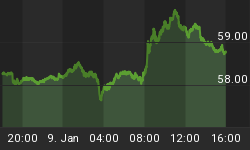Why did we build a medium term model(MT model) on top of our short term model(ST model)?
The short term model is clearly the one with the best track record on a 10years time horizon (based on our back testing) but in some turbulent times, it can be trapped by some "major false signals" generated during extreme oversold periods (2008 & 2009). During those periods, 'good' short positions are closed too early and 'bad' long positions are opened.
We can notice that on the long run this situation is not really harmful because the long term track record remains good but when the model is trapped by extreme oversold conditions (during several weeks/months), the ST model can suffer a lot, and the trading book can book major losses. According to the level of leverage we use, those losses could "kill us"....
In order to minimize this risk, we decided to build a medium term model. Rather than working on daily prices, this model works on weekly prices. So, when the model generates a sell (or buy) signal due to extreme overbought (or oversold) conditions, it takes quiet a long time before reaching oversold (or overbought) conditions on a weekly basis and we can surf medium term trends.
On top of that, when the MT model books a stop loss, it remains "out of market" for some weeks/months. So, we are less exposed to news flow than with the ST model because we can remain on the sideline for a couple of weeks/months with this Mt model.
Here is a 10 years back testing of the P&L generated by our MT model vs the SPX:

For sure, the medium term return on this model is less attractive than the one from our ST model, but we believe that on a risk return adjusted basis it is interesting to work with both models.
The MT model is relatively similar to the ST model but the level of some parameters has been modified to take into account we are working on weekly basis rather than on a daily basis. Therefore, the kind of oversold/overbought conditions we can encounter on a weekly basis are not the same than the one we can encounter on a daily basis.
Description of the MT model:
First of all, all our analysis is based on the same proprietary index than for the ST model: The Sigma Whole Market Index (an aggregate of 16 US indexes).

Based on this index, we compute 4 parameters (on weekly data):
- The Sigma Trend Index (STI): it represents the power level of the trend
- The trend Level(TL): it represents the level of maturation in the trend (from '1' oversold to '5' overbought)
- The Swing: it represents the velocity of the weekly change (from '1' very negative to '5' very positive)
- The Power Level(PL): it represents the weekly change in the probability to get a reverse to the mean in coming weeks

Conditions to generate a "sell" signal in day (d):
- Rule: [STI(d-1) or STI(d-2) or STI(d-3) >= 55] AND [Swing(d) = 1or PL(d) <=2]
Conditions to generate a "buy" signal in day (d):
- STI(d-1) <= -55; Power Level(d) =5
We know the expected return of this model is less attractive than the one from the ST model. Nevertheless, we believe that on a risk/return adjusted basis this model has some interest.
So, we decided to launch a live test of our medium term model but due to the lower expected annual return of this model (based on our back testing) relative to our ST model, we decided to weight it for roughly 20% of our total trading book.
Here are the latest results of our MT model:

And here is our MT trading book:
- SPX: 2 shorts at 1682.84 (stop @ 1701, 3pts above the model to take into account bid/ask spread)
For those of you interested in our trades, you can visit our site: we post all our trades in real time. You can also subscribe to our twitter account (@SigmaTradingOsc), it is free and you are updated on our latest view/trades.















